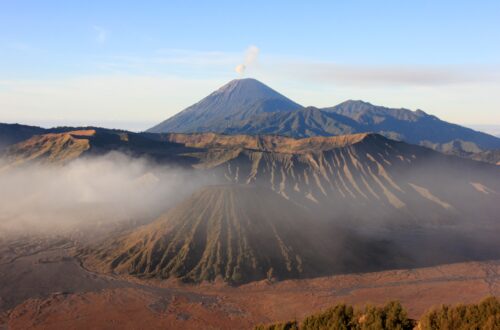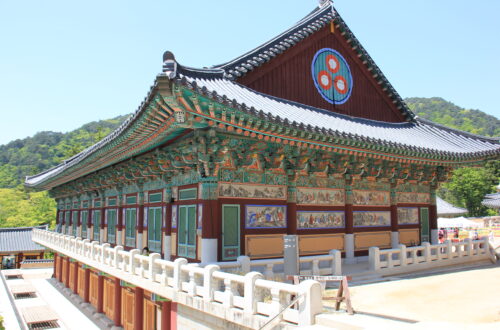
Hong Kong
On my way to Vietnam, where I will be traveling for about three weeks, I have a stopover in Hong Kong. I have just under ten hours before my flight to Hanoi departs, just enough to spend a day in this metropolis. Kind of a bonus to my Vietnam trip. The flight to Hong Kong is long, about eleven hours. Due to the eight hours time difference, it’s 7 a.m. when I arrive in Hong Kong. I didn’t really sleep on the way, like I almost never do. I’m tired and my biological clock tells me it’s the middle of the night, but I’m not going to let that ruin my day in Hong Kong.
Hong Kong’s modern airport is spacious. The long, largely empty corridors feel a bit chilly. I quickly find my way to customs. My luggage is already labeled for Hanoi, so I don’t have to pick it up. In the large central hall I find an ATM to get Hong Kong dollars and next I buy a metro ticket. Every ten minutes a modern, clean and comfortable metro leaves the airport for the city center: the Airport Express. After 25 minutes I exit Hong Kong Station and enter the bustle of the city. Less than a hundred meters down the street I notice a Starbucks. I can’t resist: I need coffee. And a fresh bagel.

Until 1997 Hong Kong was part of the British Commonwealth, after which it became a part of China. But with the exception of foreign policy, Hong Kong has almost complete autonomy. It’s called the ‘one country, two systems’ policy. Hong Kong consists of a number of islands, of which Hong Kong Island is the largest, plus a part that is located on mainland China. In between is Victoria Bay. The territory of Hong Kong is more than a thousand square kilometers and counts more than seven million inhabitants. I’m in the ‘Central’ district, which is on the north side of Hong Kong Island and, as the name implies, is the center of the city. The scarce land is used effectively here: the city is all high-rise buildings. Shiny modern buildings next to ugly old concrete blocks.
Hong Kong doesn’t really have a grid pattern like New York City, for example, but you can still find your way fairly easily. It is a city with clear height differences: streets run above each other and under each other and as a pedestrian you have to find your way via crossings, tunnels and footbridges. It strikes me that the city is fairly compact. Within Central everything is within walking distance and not once do I feel like I have to walk for long.

One of the first things I come across is a demonstration. About a hundred people are demonstrating with signs and banners. Most of the banners are in Chinese, but from one sign I get that a number of banks, including Dutch bank ABN AMRO, are the target of the noisy demonstration. Here and there I see people with face masks on the street. No luxury: if you walk in thi city for a few hours, you inhale enough exhaust fumes for a year.
The sleek Bank of China building is worth a visit. On the 43rd floor you have a panoramic view over the city and Victoria Bay. I continue through Hong Kong Park, a somewhat strange park, which besides greenery and water also houses an indoor game hall, a tea museum and a tai chi field. The turtles in the park look a bit out of place in this metropolis. You are surrounded by traffic everywhere. Cars, buses, taxis and, very unusual, double-decker trams. I’ve never seen those before. And a lot of people of course. Yet the crowds are not really annoying and I do not feel unsafe in Hong Kong for a moment.

I continue my city walk towards ‘The Peak’, the mountain that borders Central on the south side. A special tram runs from Hong Kong Park to the top of the mountain. The tram covers a height difference of 370 meters in a few minutes. You occasionally drive up at an angle of no less than 27 degrees. At the top of The Peak, the view is spectacular. From the observation deck of The Peak Tower, you can see the entire city below. Provided the weather is cooperative. Clear days are rare in Hong Kong, where air pollution is a serious problem. Today it’s partly cloudy and about twenty degrees, so fine weather, but the sky over Hong Kong is hazy. On the other side of the bay you can see the neighborhoods of Kowloon and Tsim Sha Chui, the neighborhoods on mainland China.
After taking the tram back down, I walk west down Queen’s Road, where Central turns into SoHo, an abreviation copied from New York City (where it means South of Houston street), here it means South of Hollywood street. While Central is the business center of Hong Kong, in SoHo there are more restaurants and shops and in genral a bit of the more traditional Hong Kong. Such as the traditional market in Graham Street, where fresh vegetables and fish are sold. The fish doesn’t get fresher than here: the shrimp, lobsters and various types of fish are alive in shallow water or on ice. A little further on, another piece of tradition: between the (ugly) high-rise buildings is the Chinese Man Mo temple. Inside there is a strong smell and a blue haze. People place burning incense sticks on various altars. At any given time people walk in and out. On their way to work or home they briefly drop to perform a short sacrificial ritual.

In my opinion Hong Kong is not really a beautiful city. It’s a pleasant city, compact, clean and it feels safe. It is clearly a Chinese city, but with an English twist. The city is completely bilingual, cars drive on the left side of the road and many street names refer to the past (when Hong Kong was still a British crown colony). I walk back along the quay, where the ferries to the other parts of the city leave. Due to the limited time I have to spend in Hong Kong, I can’t afford to sail across the bay to Tsim Sha Tsui. I have to get back to the airport…




